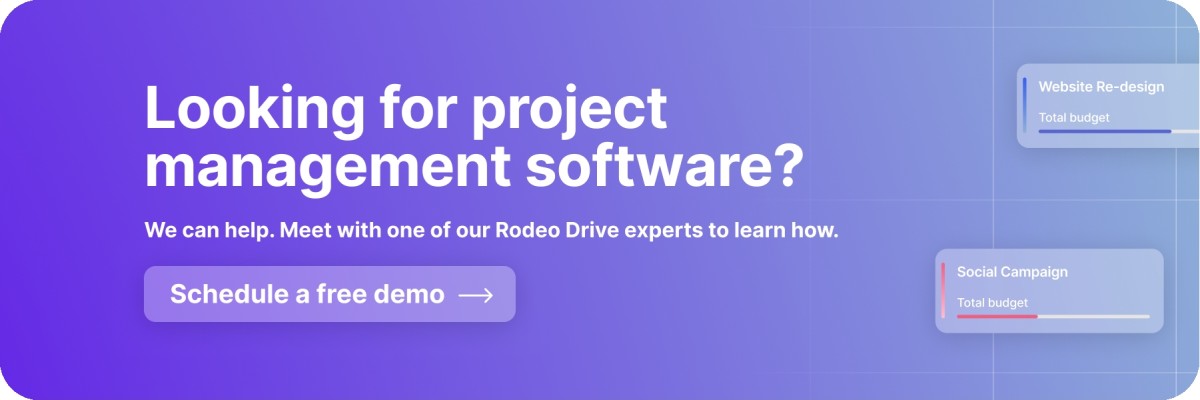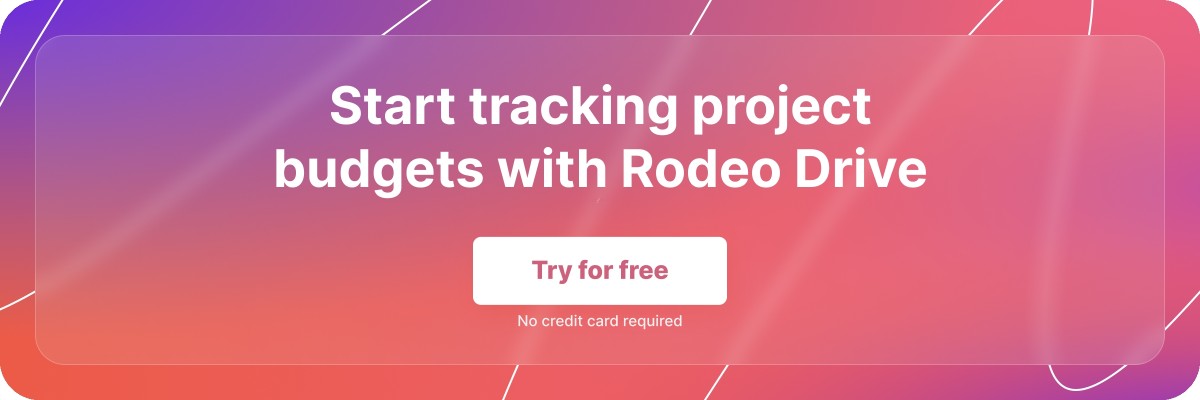How to Create a Project Budget Proposal [Free Template]
You have a great idea for a new project, and all you need is the buy-in from stakeholders to get the funding.
A well-prepared project budget proposal can help secure financing and establish clear goals and timelines. Plus, the document ensures that the project stays on track and is completed within the desired timeframe and budget constraints.
Whether you're a seasoned project manager or new to the field, following these tips will help you create a comprehensive and effective project budget proposal that will set your project up for success. We’ve also added a free project budget proposal template, too.
Let’s dive in!
What is a project budget proposal?
A project budget proposal outlines the estimated costs of completing a project. The proposal includes all the necessary resources, such as personnel and materials.
The budget proposal document allows stakeholders to consider the costs and compare them with the benefit of the project to decide if their investment would make sense. Plus, the written document ensures everyone’s alignment and is essential to instill financial transparency within your organization and team.
Your proposal must be concise and efficient and justify the budget, as stakeholders often scan through the document.
The project budget proposal can also include additional documents such as:
- The project description and timeline
- KPIs or the expected outcome
By adding these project details, you might avoid going back and forth over topics that can cause a delay in the start of your project.
A visualization of the breakdown of the total costs into categories helps stakeholders get a granular view of how much funding the project will need and where it will go. A table or a chart will make your project budget proposal look professional and make the numbers easier to understand.
Also read: How to Write a Persuasive Project Proposal
The benefits of working with a project budget proposal
Creating a project budget proposal helps you to see if a project is viable. A good proposal document assures stakeholders that the investments are worth it and helps set expectations – and properly communicating expectations is a key PM skill.
The project budget enables project managers to forecast direct costs, such as billable hours and travel costs, and indirect costs, like administration.
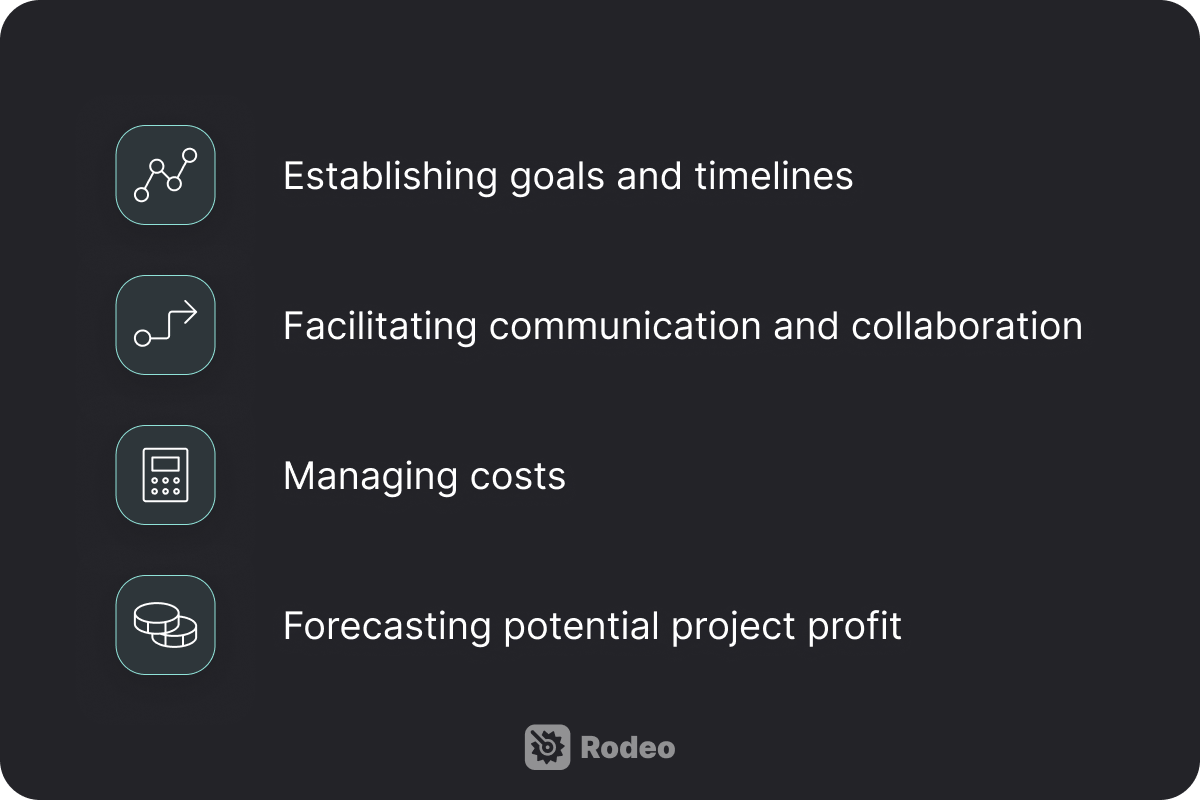
A few other benefits worth mentioning:
-
Establishing goals and timelines: the document will act as a blueprint for project managers and includes a clear and comprehensive overview of the project and its objectives to avoid messy tasks and missed deadlines.
-
Facilitating communication and collaboration: The proposal promotes communication and collaboration among team members and stakeholders before the project kicks off by providing a clear and comprehensive overview. This document acts as a great talking piece during meetings and feedback sessions.
-
Managing costs: We hate to break it to you. But, there is little financial wiggle room after the budget is signed off. A project budget proposal helps project managers effectively manage costs and ensure that the project is completed within the desired budget.
-
Forecasting potential project profit: It is important to clearly understand the projected expenses for the project to calculate the (potential) net earnings. A budget proposal can be valuable in determining the financial viability of a project and making informed decisions about its potential success.
Create a project budget with Rodeo Drive
What to include in a project budget proposal?
Your project budget proposal should include every single cost necessary to deliver the project, an outline of the total amount of funding needed, and how that funding will be allocated to specific tasks and activities.
Most budget proposals include the following elements:
Project name and goal
A project description is essential to understand the requirements of a specific project.
Think of it as an elevator pitch. You’ll need to add information such as the project name, why the project is relevant, and the impact it will have.
Your stakeholders need to understand what your project entails in order to budget for it properly and explain why the resources are essential to delivering a successful project.
Spending more time on the outline of the tasks and deliverables might be tempting.
However, to get to the production stage, it is important to understand why the deliverables are necessary.
An initial meeting with stakeholders can help to gauge if your project objectives are aligned with theirs. When the project goal is signed off, you’re more likely to get the budget approved.
Budget summary
After outlining the project objectives, it is important to summarize the cost elements in the project budget proposal.
This section serves as an overview of the various costs that will be detailed later in the proposal. The categories of expenses that should be included may vary depending on the project's specific requirements.
By providing a clear summary of the costs, stakeholders will have a better understanding of the financial requirements of the project and will be able to make informed decisions about funding and resources.
Here's an overview of some of the cost elements typically included in project management budget proposals:
Direct costs: Include the project team's compensation, such as salaries and payroll taxes, and any expenses incurred by the project team for travel related to project activities. Equipment costs such as software tools or rented equipment also go in this category.
Indirect costs: The rent of the office building, office equipment, and other operating expenses.
Breakdown of all costs in phases, tasks, and activities
Dividing your project into phases is one of the best ways to make budgeting doable and easy to explain to team members and stakeholders.
The activities of your project will depend on your project objectives. If you work in the creative industry, you might find it helpful to divide your projects into phases reflecting the type of tasks, such as pre-production, production, and post-production.
By creating three smaller budgets and adding the corresponding tasks and activities to the phases, you can add more information on why you need the budget on a more granular level.
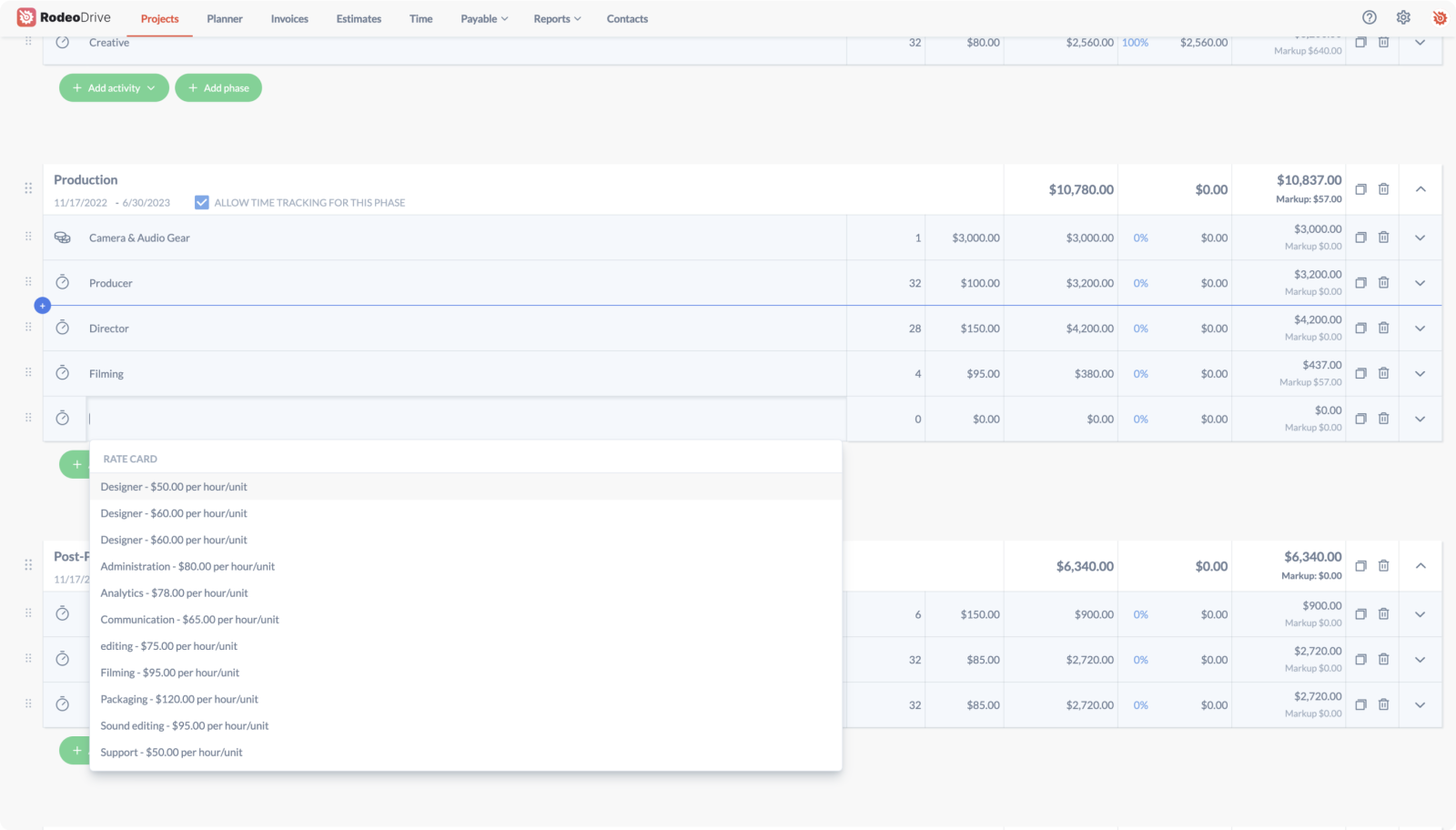
Here’s an example of what building a project budget can look like in Rodeo Drive. For this project, the budget is broken down into phases, with added time activities and flat-fee expenses.
Project timeline
Timing is everything, right? Your stakeholders need to understand when you expect the project to be completed.
Provide a clear, chronological outline of the project timeline and explain how the project should progress.
Project budget tracking
Providing stakeholders with progress reports supported by data is the best way to keep them up to speed throughout the project.
Some project managers prefer to manually track their budgets in spreadsheets or notes. Be warned that it will make your cost-tracking process complicated. Spreadsheets are vulnerable to data entry errors that can impact accuracy.
Implementing project controls can help avoid overspending. A team member could take on the role of project financial controller. This dedicated person could examine the data entries and identify issues.
Acceptance form
After reviewing the entire project proposal, your clients or stakeholders should be satisfied and ready to move forward.
The next step is to have them sign an acceptance form. This form is a formal agreement between both parties that they have reviewed and accepted the budget.
It includes the signatures of both parties, indicating that they agree with the budget and terms outlined in the proposal.
How to develop a project budget proposal: step-by-step
Managing financial and administrative tasks can be daunting, especially when juggling multiple projects or planning a complex or long-term project.
Developing a project budget proposal is easier to tackle when broken down into steps. We’ll guide you through the steps you’ll need to follow to build project budget proposals successfully.
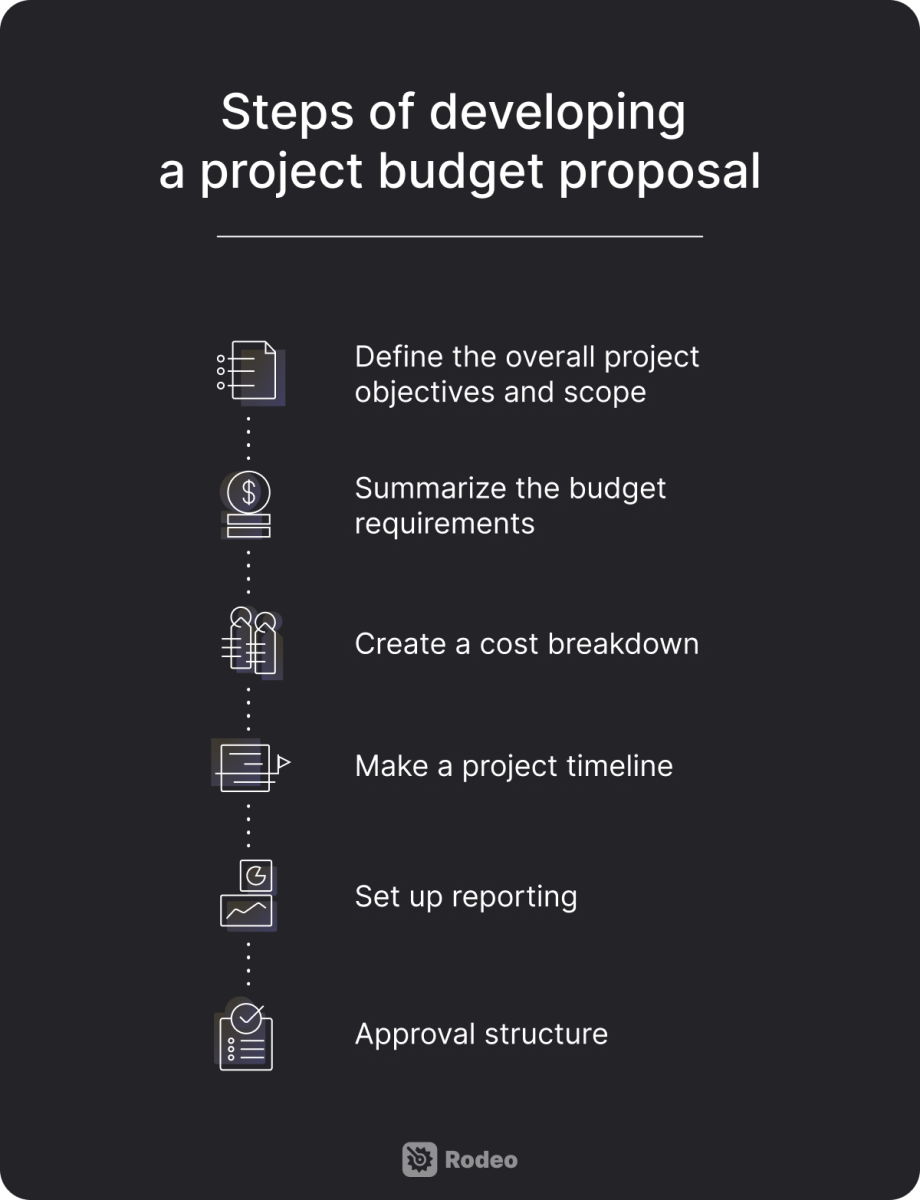
1. Define the overall project objectives and scope
Project budget proposals contain a ton of information. Before you start, consider adding a cover letter and table of contents, making your project proposal look professional.
Then, grab the stakeholders’ attention by writing an executive summary of the project objective and including the following:
- A brief overview of the problem the project will address
- Your solution and how you will approach the issue during the execution
- The impact the results will have
Your project scope is the project's boundaries and includes your plan for deliverables. This step is important because you must consider what the client and other stakeholders want.
Understanding your scope from the start keeps your focus on the budget and prevents overspending. After this step, you can outline and summarize the financial requirements.
Related: The project management checklist: 12 steps to follow
2. Summarize the budget requirements
The title gives it away: after you briefly explain your project objectives, including a summary of cost elements.
Your project budget summary lists the various costs you’ll break down later.
This section makes your total budget clear for each category, as well as the total budget in its entirety. By doing this, stakeholders can quickly scan through the various cost elements.
Your cost elements may include direct and indirect costs. Summarize your cost elements, such as travel and billable hours, based on your largest expense categories.
Stakeholders need an itemized list of what you plan to spend money on, which you’ll make in the next step - but they’ll also want a section of your budget proposal that clarifies the total budget.
Also read: How to Effectively Manage Marketing Campaigns
3. Create a cost breakdown
Providing a breakdown of costs can be very helpful in gaining stakeholder trust.
Categorizing your expenses also helps you prioritize your spending, which will be particularly useful should you cut down on your budget.
When breaking down both direct and indirect costs, provide the following information:
-
Cost type: Identify the cost included in each category, such as wages, utilities, or other specific project costs. List the quantity and unit price instead of hours for equipment rental and travel.
-
Cost explanation: Provide additional details for the costs in every section or add proposals or estimates by external parties.
-
Total cost: Calculate the total cost of each expense across the entire project.
How do you go about making a budget? There are many different methods you can use to put them together. Use this guide to find the method that works for you: 8 Tips for Managing Project Budgets Like a Pro.
4. Make a project timeline
A project timeline clearly shows all project deliverables and which activities must be completed before work on the next task can start. By doing this in a visual format, everybody can see how the project is supposed to move forward.
All projects are unique, but this crucial information must always be included in a project timeline:
- All the tasks
- Deadlines for each task
- Estimated duration of each task
- Dependencies
- Employees assigned to each task
Related: The Ultimate Guide to Managing Projects Effectively
You can visualize your timeline in different ways. Which one works best for you depends on the project type or the project management methodology you prefer.
5. Set up reporting
Ideally, you want to provide stakeholders with a timely, detailed (de)brief of the budget spent. Or your client might request a detailed overview of the billable hours. You’ll need data to oversee the progress.
Decide how the reporting should be set up and the data you and your stakeholders need. Real-time reporting is based on up-to-the-minute information, while static reports hold historical data.
Static reports are generated periodically, giving insights per day, week, or month. These reports are handy for evaluating results within a specific time frame.
However, your stakeholders might request information outside of scheduled meetings. Real-time reports are continuously updated and could help you when a request comes in. These reports show how each activity affects the budget while the project is still running.
Don’t worry, you don’t have to compile these reports by hand. Project management software can help you.
6. Approval structure
Confident your budget is ready to go? It’s time to submit your budget proposal for approval. You should feel optimistic about all the budget elements listed but also prepared for revisions. Get approval by adding a signature area at the bottom of the document so stakeholders can quickly sign off on the budget.
Related: Pricing Projects Right: 7 Tips From Experts
Free project budget proposal template
A detailed proposal makes you and your team look professional and trustworthy, inspiring the stakeholders to fund the project.
Using a template to build your project budget proposal can save you time, which also helps you improve on and reuse that template over time. Plus, it can prevent you from forgetting essential elements.
Our free project proposal template provides a project proposal outline while ensuring your proposals are aesthetically appealing to stakeholders.
Download our free project budget proposal
Managing project budgets in real-time with Rodeo Drive
Creating a project budget is time-consuming. Fortunately, project management tools like Rodeo Drive can reduce wasted time to help you increase your productivity.
Create phase-based budgets
Budgets are the first step to getting stakeholders on board and making sure projects are profitable. In Rodeo Drive, you can break your budget into phases, with time and expense activities and tasks for each phase.
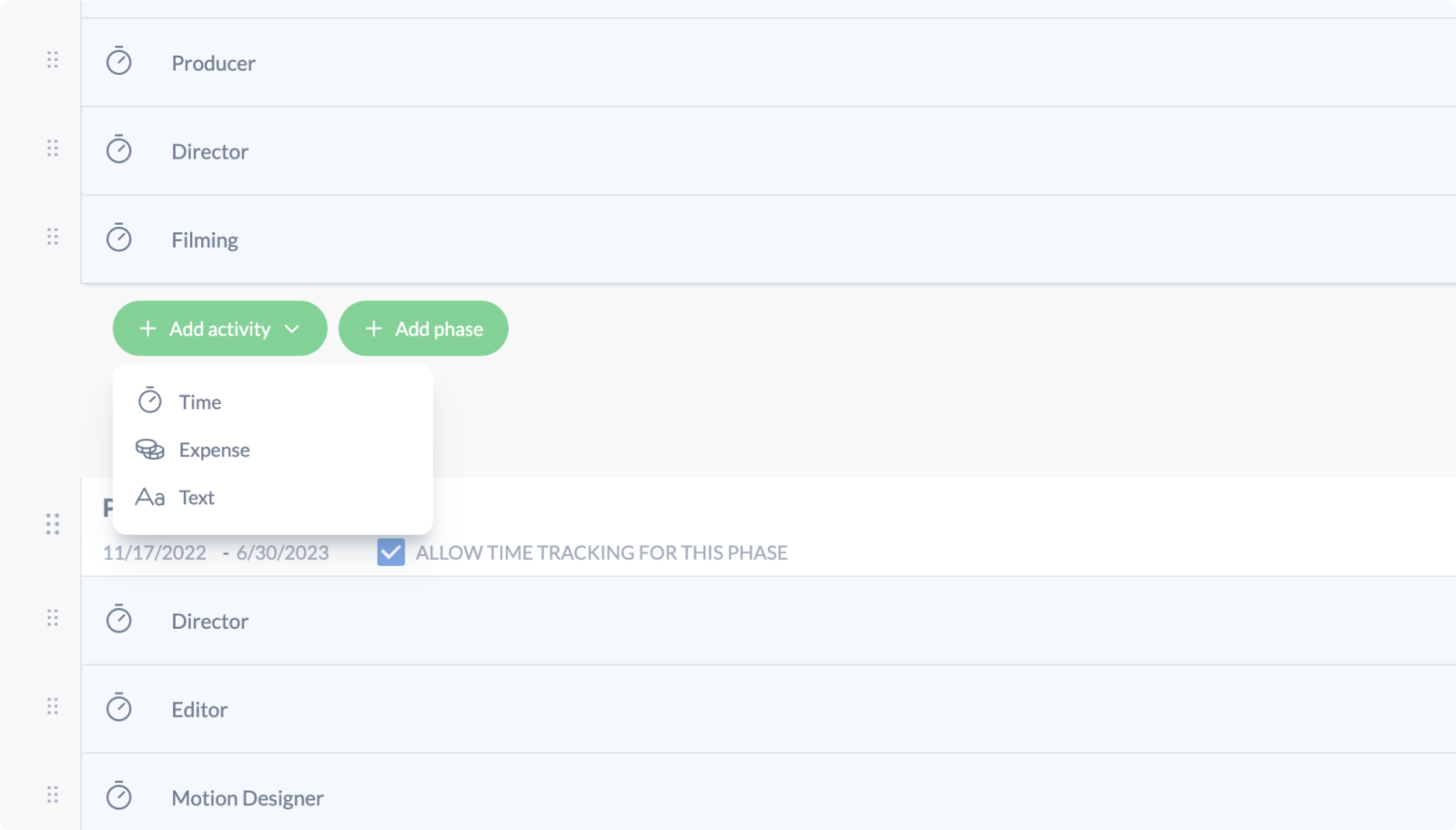
Since every time entry in Rodeo Drive must be connected to a budget activity, your budget will automatically update as your team record their time. This means your spending can be easily tracked with no additional effort.
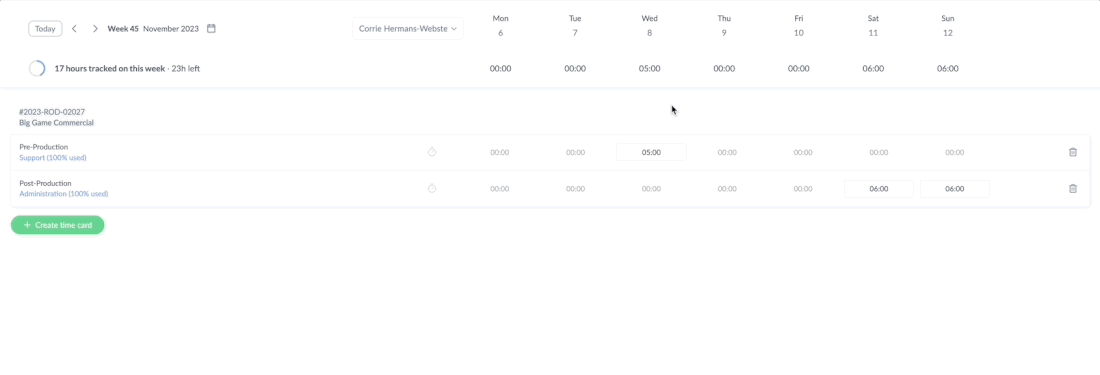
Send your project budget for approval
Once you finish building your budget in Rodeo Drive, you can send it as an estimate for approval directly from the platform. Estimates and invoices are fully customizable, allowing you to add your own terms and conditions, discounts, and intro summary.
Get data-driven project insights
All of Rodeo Drive’s features are interconnected, you’re able to access report data on metrics such as project profitability, employee productivity, and time registration.
.png)
These insights allow you to make data-driven decisions on how to improve your budget for next time. Filter your data by team member, project, tag, and date, or download it as a CSV or Excel file for additional insights.
Let's see if Rodeo Drive can make your project budget proposal process more manageable for you. Try for free today.





